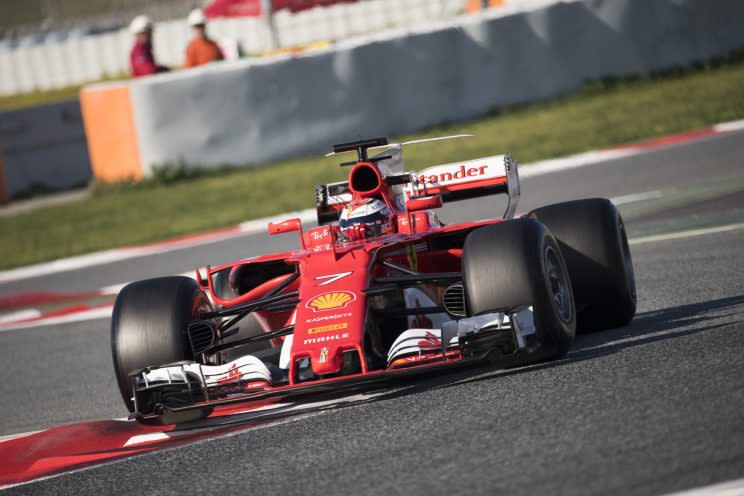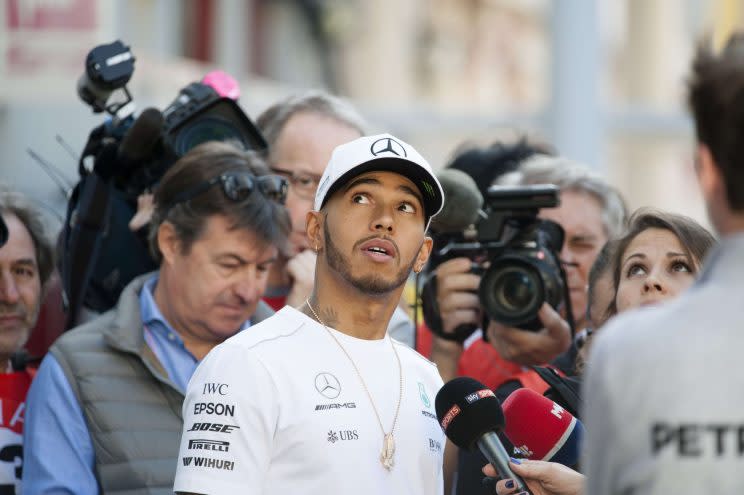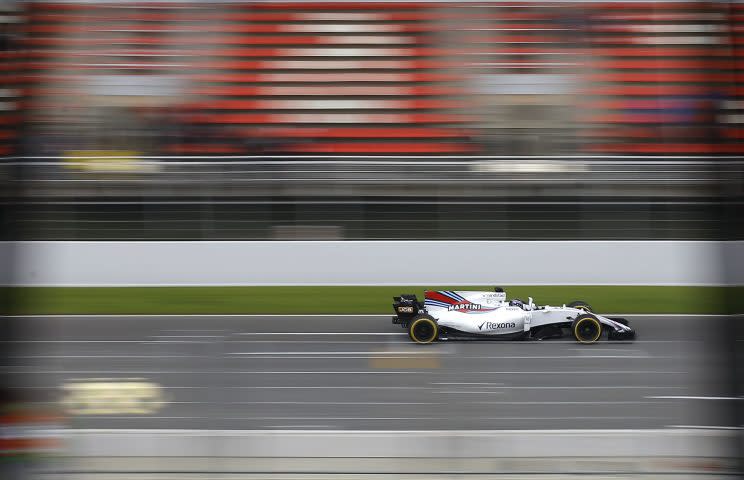Formula One 2017: Faster cornering, more dangerous racing and no more Bernie

Welcome to a new season, with a new set of rules and a new, more aggressive, look for F1 and its 200mph+ cars.
There are a lot of changes to get used to but the biggest change of all is behind the scenes. Well, sort of.
And I’m not sure how I feel about it.
READ MORE: Formula One’s new rules rated
No more Bernie

Bernie Ecclestone, for so long the grand prix grand fromage, F1’s literal driving force, the mischief-maker-in-chief, was given the grand title Chairman Emeritus when Liberty Media completed their takeover of the sport last year.
Chairman Emeritus? In reality, it is a most hollow title which means nothing more than lipservice is being paid to the holder.
Ecclestone is no Chairman Emeritus – never was, never will be. He’s more of a Chairman Mao, a mini-Mao if you will, a full 11 inches shorter than the communist revolutionary and with a less impressive, though often controversial, line in soundbites.
In Pictures: The WAGS of every 2017 Championship driver
In Pictures: Formula One – Every driver, every car of the 2017 season
Just a week before the opening race of the 2017 season, Ecclestone told the Mail on Sunday: ‘I can’t do anything. Even the staff have been told they shouldn’t talk to me.
‘They want to get rid of the Bernie era: “Let’s get rid of Bernie’s history”.’
Like Mao, Ecclestone is a fan of the cult of personality when it suits him, and only when it suits him.
But F1 can no more erase Ecclestone’s impact marks on the sport than China can erase Mao’s … well, you get the idea.
As the 2017 season looms large and I think back to the chaos of last year, to the fiasco around qualifying, the flip-flopping panic as F1 changed the rule book at the last minute and then spent the next few weeks changing it back, it’s obvious that I, at least, am going to miss the Ecclestone epoch.
Yes, he took far too much out of the sport but, then, he made it what it is today. Yes, he failed to protect the sport’s minnows and he swanned about with individuals and regimes of questionable morals.
But he was always clear that his job was to make the sport profitable and, every time he was involved in controversy, F1 was kicked straight into the headlines. Ka-ching.
READ MORE: Lewis Hamilton calls for more women in ‘dude’ dominated F1 paddock
READ MORE: No sweeping Vettel up in Ferrari hype
Formula One in the 21st century is as much about the politics and the glamour as it is about the mechanics, the drivers and the fans who camp out at Silverstone or any other circuit. And Ecclestone kept it interesting.
As a fan, I may have been frustrated, enraged, disbelieving at some of Bernie’s blunders. But there was always something to talk about when Ecclestone was on form, always something to argue about over-and-above the sport’s day-to-day machinations, always the ridiculous opportunity to feel superior to a man who had created a £1billion-a-year sporting circus.
So, 2017, let’s see how interesting you can keep F1 between the races. Now, about some of those other changes to the races themselves…
Need for speed: Caution advised

By now, we all know about the fatter tyres (25 per cent more rubber), improved downforce (bigger wings front and back, big ol’ bargeboards on the side, big diffuser underneath the rear, adding up to an extra 15-30 per cent downforce), and more powerful engines (stand up Mercedes, with an estimated 70bhp improvement; sit down, Honda, this isn’t lawnmower racing).
We know the cars can corner faster – as much as 25mph more in high-speed, high-G bends – more than offsetting the loss of speed caused by increased drag from the new design.
The drivers have changed their training regimes to reflect the additional physical demands that higher cornering speeds will place on them, with a greater priority given to building key muscle groups, even if that means a driver is a little heavier than last year.
READ MORE: Last year’s crash the least of Alonso’s worries
READ MORE: Hamilton not no.1 at Mercedes – Bottas
The fear is that higher cornering speeds, coupled with the ‘dirty air’ coming off these grippy cars, will make overtaking harder, which is not what anyone wants.
Those huge front wings are the key to downforce in F1 – not only do they provide about a third of the total downforce, they also guide airflow back over all the other aerodynamic elements of the car.
Disrupt the air going over a front wing – by driving in the turbulent air behind another car – and you begin to destroy a car’s aerodynamic grip. Getting close enough to overtake becomes more difficult because the car in front always has a double advantage: it’s driving in clean air, maximising downforce and cornering speeds, and it’s destroying the downforce of the car behind by leaving a hot, turbulent trail in its wake.
It’s true that the car behind does get the advantage of a ‘tow’ on a long straight, because the leading car is punching a hole in the air for it, but getting close enough to utilise this is harder because of turbulence slashing cornering ability.
This is a problem that the 2017 cars seem to have made worse, which is bad news for fans of overtaking.
There’s an even bigger threat to overtaking – extra downforce and fatter tyres mean drivers can brake later. Given that the braking zone is where much of the overtaking action takes place, shrinking this zone can only make it harder to dive down the inside, late on the brakes.
So big are the additional demands being put on brakes that the maximum thickness of brake discs has gone up from 28mm to 32mm, to cope with around 25 per cent more torque, and the number of little holes drilled into those discs to stop them cooking has jumped from 1,200 to 1,500.
What is all this likely to mean for racing?
It will mean tired drivers, for one thing, especially early in the season while they’re still adapting to pulling 5-6G in corners and another 6G under braking. Those are huge stresses under which to function, especially in a 150mph corner with Max Verstappen pulling a move on you.
READ MORE: F1 2017 pre-season report: Mercedes
READ MORE: F1 2017 pre-season report: Red Bull
READ MORE: F1 2017 pre-season report: Ferrari
Talking of Max, the most prolific overtaker on the grid, we may see frustrated drivers coming to grief as they try to execute passes in smaller overtaking zones and at higher speeds.
Circuits have had to up their safety standards to take account of the higher cornering speeds but, nevertheless, accidents at higher speeds are going to happen. The kinetic energy that has to dissipate in a crash will be much higher – it’s calculated by multiplying the mass of the car by 0.5, and then by the car’s speed squared, and cars are both faster and heavier this year.
Sounds like dull science, yeah? I’ll spare you the calculations but a car carrying 50kg of fuel crashing out in a fast corner (say 150mph this year, in a corner that was 130mph in last year’s cars) will have 20 per cent more energy that has to be absorbed by crumple zones, barriers and, if all else fails, the driver’s fragile body.
Racing this year is going to be more dangerous.
Who should I bet my savings on?

No one, it’s a mug’s game. Last year, Lewis Hamilton was hot favourite.
Yippee, said the bookmakers.
This year, despite Ferrari’s strong showing and the expected upgrades to the Red Bulls for Melbourne, Lewis Hamilton is hot favourite.
Of course he is.
There were reports that Mercedes had detuned their engine for testing because of failures… and it still performed more than adequately.
READ MORE: F1 2017 pre-season report: McLaren
There were reports that Mercedes had found an extra 70bhp to add to the estimated 1,000bhp they already have.
Then there were the statistics that showed Ferrari were fastest (and Raikkonen was faster than Vettel) in pre-season testing but, come on, it’s pre-season testing. No one’s swearing to tell the truth and nothing but the truth where pre-season testing car set-ups are concerned.
If overtaking does turn out to be more difficult than last season, chances are the 2017 champion will be the driver who gets to the first corner in the lead most often, if he can keep his car in one piece. Sigh.
Anything else?

We’ll all be watching newbie Lance Stroll to see if Williams have a future star or just a chequebook on wheels.
We’ll all cheer the rule change that means wet races that start under the safety car will then have a standing start when it’s safe to do so.
Most of us will say the new cars look better than last year’s efforts, apart from those stupid ‘shark fins’ (if real sharks had fins that ugly, Jaws would have been a comedy).
Fingers are being crossed that Pirelli’s new tyres will stand up to much more punishment from drivers. Frankly, if they don’t, all those efforts to increase cornering speeds are going to look pretty blooming pointless.
The downside is likely to be fewer pitstops, with all their associated drama and strategic opportunities.
No one will mourn the passing of the ‘token’ system for engine developments, but limiting each driver to four engines for a 20-race season is a big ask of those power units.
Oh, the starts. These are going to be the most exciting starts we’ve seen in years.
New rules about the hand-operated clutch mean drivers will have to find the sweet-spot themselves, rather than relying on clever software and engineering colleagues.
I wouldn’t be surprised to see a few starting grid bumps this season as cars struggle to get off the line without bogging down or spinning up the wheels. Expect to hear drivers radioing ‘sorry guys, my bad’ as they mess up manual launches. Hurrah.
Jenson Button will watch the latest McLaren horror movie with popcorn and a big smile, rather than having to star in it and give exasperated response after exasperated response to the press afterwards. Ron Dennis may share his popcorn (schadenfreude flavoured).
Fernando Alonso will, in all likelihood, jack it all in, unless Mercedes trigger a poaching war later in the year by going big-name hunting.
Alonso’s McLaren bosses have a torrid season ahead of them – their engine deal with Honda is worth a huge amount of money to them but it’s hard to see how anyone can benefit from that particularly hellish partnership as things stand.
And finally, Kimi Raikkonen may find something to smile about in that new Ferrari. Vettel is going to be the man under most pressure – that’s the downside of being a No.1 driver, especially at Maranello – and Kimi may just spring a surprise or two.
He might even smile in an interview. But don’t bet your savings on it.

 Yahoo Sport
Yahoo Sport 






































